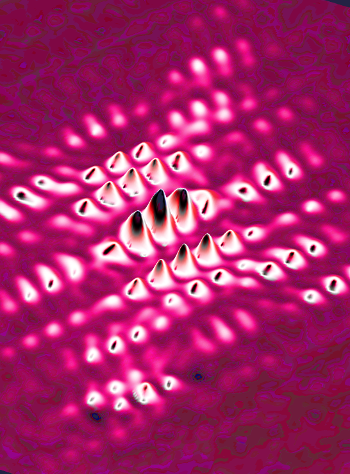ATSE prizes for top minds
 Some of Australia’s top innovators have been awarded for their inventions.
Some of Australia’s top innovators have been awarded for their inventions.
The achievements of award-winning STEM innovators were recognised at the Australian Academy of Technological Sciences and Engineering’s (ATSE’s) annual Awards this week.
Professor Veena Sahajwalla has won the Clunies Ross Innovation Award for her globally recognised waste transformation technologies. Professor Sahajwalla invented a patented Polymer Injection Technology known as Green SteelTM where waste rubber can be used instead of coke and coal, for a better, more environmentally sustainable steel making process.
Clunies Ross Knowledge Commercialisation Award winners Professor Jason Monty and Dr Forbes McGain took the award for their work on a pram-like hood placed over the head and torso of a patient, to contain virus particles and limit its spread.
The ‘Medihood’ is the result of this unique collaboration – combining their fluid dynamics expertise and intensive care ward experience.
Infectious air is contained and filtered through the Medihood, providing a safe working environment for healthcare workers and protecting patients. The multi-award winning Medihood has been deployed in over 145 hospitals across Australia and has been adopted internationally.
Professor Saeid Nahavandi FTSE took the Clunies Ross Entrepreneur of the Year Award for his exceptional work on the universal motion simulator – a two-story world-first haptically-enabled robot motion platform that functions as a vehicle and flight simulator. Allowing pilots, drivers, and other users to experience the full range of motion as part of virtual reality training, this technology has medical, engineering, military, and education applications.
Batterham Medal for Engineering Excellence winner Dr Aaron McFadyen developed air traffic management technology that dropped approval times for drone flights from weeks to minutes, enabling the safe expansion of drone flight numbers over urban areas.
Dr McFadyen worked closely with the Civil Aviation Safety Authority and Air Services to create a system for automated approval for drone flights in the highly controlled airspace around airports.
Ezio Rizzardo Polymer Scholarship winner Jefferson Lam is a solar engineer taking cues from nature and the original solar energy harvesting experts – plants - to develop lightweight panels with better performance.
Lam’s polymer science and engineering mimics the structures of plants to create solar panels that can be deployed across Australia and the world at ultra-low cost.
David and Valerie Solomon Award winner Associate Professor Laura Downie, an international leader in vision care, co-invented a device that could revolutionise dry eye diagnosis. This condition is experienced by about 1 in 5 adults.
The Acoustically-Driven Microfluidic Extensional Rheometry (ADMiER) device enables subtype specific diagnosis from a patient’s tear droplet, which means more well-informed treatment and better outcomes.
Australia’s multi-billion-dollar seafood industry is threatened by seafood fraud and illegal fishing. To combat this, ICM Agrifood Award winner Dr Zoë Doubleday has combined her expertise in marine ecology and geochemistry to develop a method to trace the origins of seafood. This technology will increase consumer confidence in high quality seafood products from sustainable sources.
Every year Australia manufactures over 220,000 tonnes of milk powder to support the production of chocolate, ice cream and infant milk. ICM Agrifood Award winner and chemical engineer Dr George Chen found a 20 per cent energy saving by using the salty whey from cheese-making. Reducing the waste and energy use from milk powder manufacturing will increase sustainability in the dairy industry.
Australian Academy of Technological Sciences and Engineering (ATSE) President Hugh Bradlow said the award winners demonstrate the cutting-edge creativity of Australian innovators.
“Nominated by their peers, ATSE Award winners are tech and innovation game-changers at all career levels and show the breadth of Australian talent in the fields of engineering, technology and applied science,” Professor Bradlow said.
“From innovating in the skies, where the best training is given to the next generation of our pilots, and drone flight monitoring is streamlined; down under the sea, where we can trace the origins of our food to ensure sustainability and best practice approaches to fishing.
“These award winners demonstrate the potential of brilliant Australian R&D,” said Professor Bradlow.
“As we move towards a net zero emissions future, their inventions are paving the way for increased solar panel efficiency and affordability to meet demand; and helping end waste by bringing new life to materials, and new approaches to sustainable resource processing and production.”








 Print
Print